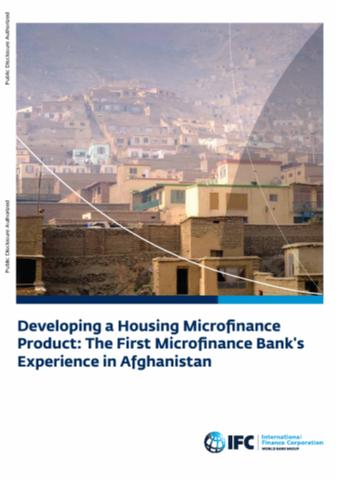Resource information
The objective of this case study is to document an example of the successful design and implementation of housing micronance (HMF) products by analyzing the approach taken by the First Micronance Bank of Afghanistan (FMFB-A) from 2009 to 2013. This report aims to encourage other lenders to follow suit and offer housing-related loans to low-income earners. It is part of IFC’s MENA Micronance Knowledge Management project, which aims to raise awareness among micronanceinstitutions (MFIs) about the importance of risk management, product development, and transformation. FMFB-A was established in 2003 with the mission to reduce poverty and promote nancial inclusion by providing its clients with access to nancial services. Shareholders of FMFB-A are the Aga Khan Agency for Micronance (AKAM), Aga Khan Foundation USA, the German Development Bank (KfW), and the International Finance Corporation (IFC). FMFB-A has a nation-widepresence in Afghanistan and serves over 53,000 clients with an outstanding portfolio of 64.5 million dollars. Housing nance accounts for about 17 percent of its total portfolio. FMFB-Ais currently the only MFI in Afghanistan that offers a housing micronance product. FMFB-A implemented a rigorous, albeit exible, approach to the roll-out of its HMF products in Afghanistan. The idea to develop an HMF product at FMFB-A started in 2007 as a response to client demand. Its aim has been to increase access to housing micronance for Afghanistan’s low-income households in urban and rural areas. It also sought to improve the quality of housing for this segment by offering construction technical assistance (CTA) services.


